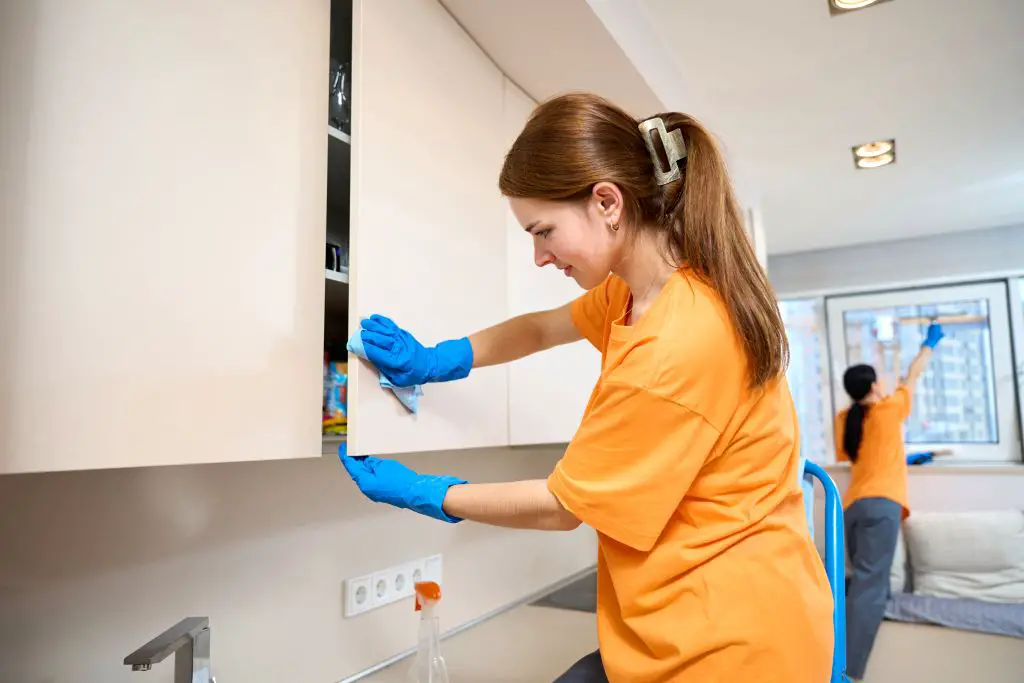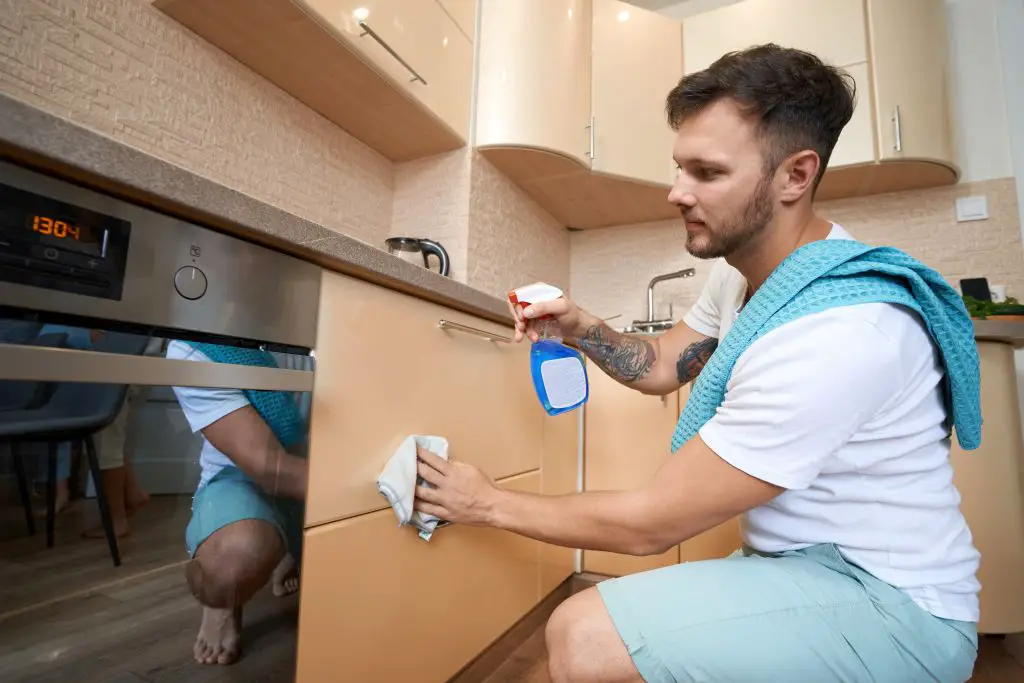Kitchen cupboards can easily accumulate grime and oil stains over time, especially with frequent cooking and use. These stains can become increasingly stubborn and difficult to remove as they age. However, keeping your cupboards clean and free of grime can make a big difference in the overall look and feel of your kitchen. Clean and shiny cupboards can add a sense of spaciousness to your work area, and surfaces free of grime won’t emit unpleasant odors. Therefore, it’s important to get and keep your cupboards as clean as possible to create a space that you’re proud to work and socialize in.
The Problem: Oily Film and Sticky Buildup
It’s not uncommon to open your kitchen cupboards and find them covered in grease and even sticky to the touch. This can be an unwelcome surprise, but it’s important to clean them up as soon as possible. With all the cooking and mess that goes on in the kitchen, even the most diligent of home chefs can experience a buildup of oily film and sticky residue on their cupboards. Fortunately, there are a few solutions to clean up your cupboards and make them look like new again. Here’s how you can clean oily or sticky cupboards.

Removing Grease and Grime
Our kitchens are often the gathering place for family and friends, where food, conversation, and connections flow freely. With the amount of use our kitchens get, there are some obvious spots that need to be cleaned frequently. However, our kitchen cupboards often go unnoticed, quietly collecting dirt, dust, splatters, grease, and other residues. Over time, this mixture can stick to cupboard surfaces like a sticky paste that can be difficult to remove.
DIY Solution: Vinegar and Water
Vinegar isn’t just for pickling veggies or spraying on French fries. It also has oil-busting properties that can be useful in cleaning kitchen cupboards. To use vinegar to clean your cupboards, simply dampen a clean, dry cloth with undiluted white vinegar and wipe down your greasy cupboards. Rinse your cloth with warm water, wring out the excess moisture, and use it to wash the cabinetry. Dry the damp surfaces with a paper towel, but take note of any still-sticky areas that may require additional attention.
Commercial Degreasers
Removing oil from kitchen cupboards isn’t a difficult task if you have the right supplies. Some homeowners opt for a commercially made degreaser that can tackle heavy oil buildup. If you choose to use a commercial degreaser, it’s best to follow the manufacturer’s instructions carefully. Others prefer a DIY degreaser that can be made from materials found in the kitchen and is eco-friendly. In this article, we’ll be looking at a DIY solution for removing kitchen cupboard oil.

DIY Solution: Vegetable Oil and Baking Soda
To use a DIY degreaser to clean your cupboards, start by using a soft cloth or sponge to wipe the cleaner onto the outside of your cupboard doors and drawers. You may need to use a little elbow grease to remove heavy grease and grime buildup. To break through stubborn layers of old, sticky, dust-mixing oil, try using vegetable oil. Oil can soften and lift such stains. Mix it with 2 parts baking soda for enhanced cleaning properties. Rub the baking soda and oil paste with a soft cloth for cupboards that look as though they belong to someone who doesn’t cook. Use the paste to polish up dirty hinges, handles, and pulls as well. Finally, rinse the cupboards with warm water and a little dish soap before rinsing and drying them.
Conclusion
Once you’ve finished this deep clean, your cupboards should be free of oil and smooth to the touch. Remove your hardware from the soapy water soak and dry it thoroughly.
FAQs
What causes stains on kitchen cabinets? – Grease, dirt, dust, and splatters are common culprits that can cause stains on kitchen cabinets.
Can I use bleach to clean my cabinets? – It is not recommended to use bleach to clean kitchen cabinets as it can damage the finish and discolor the wood.
How often should I clean my kitchen cabinets? – Ideally, kitchen cabinets should be cleaned at least once a month to prevent buildup of dirt and grime.
Can I use a steam cleaner on my cabinets? – It is not recommended to use a steam cleaner on kitchen cabinets as it can damage the finish and cause the wood to swell.
What’s the best way to clean cabinet hardware? – To clean cabinet hardware, use warm soapy water and a soft cloth or sponge, and dry immediately to prevent rusting.
